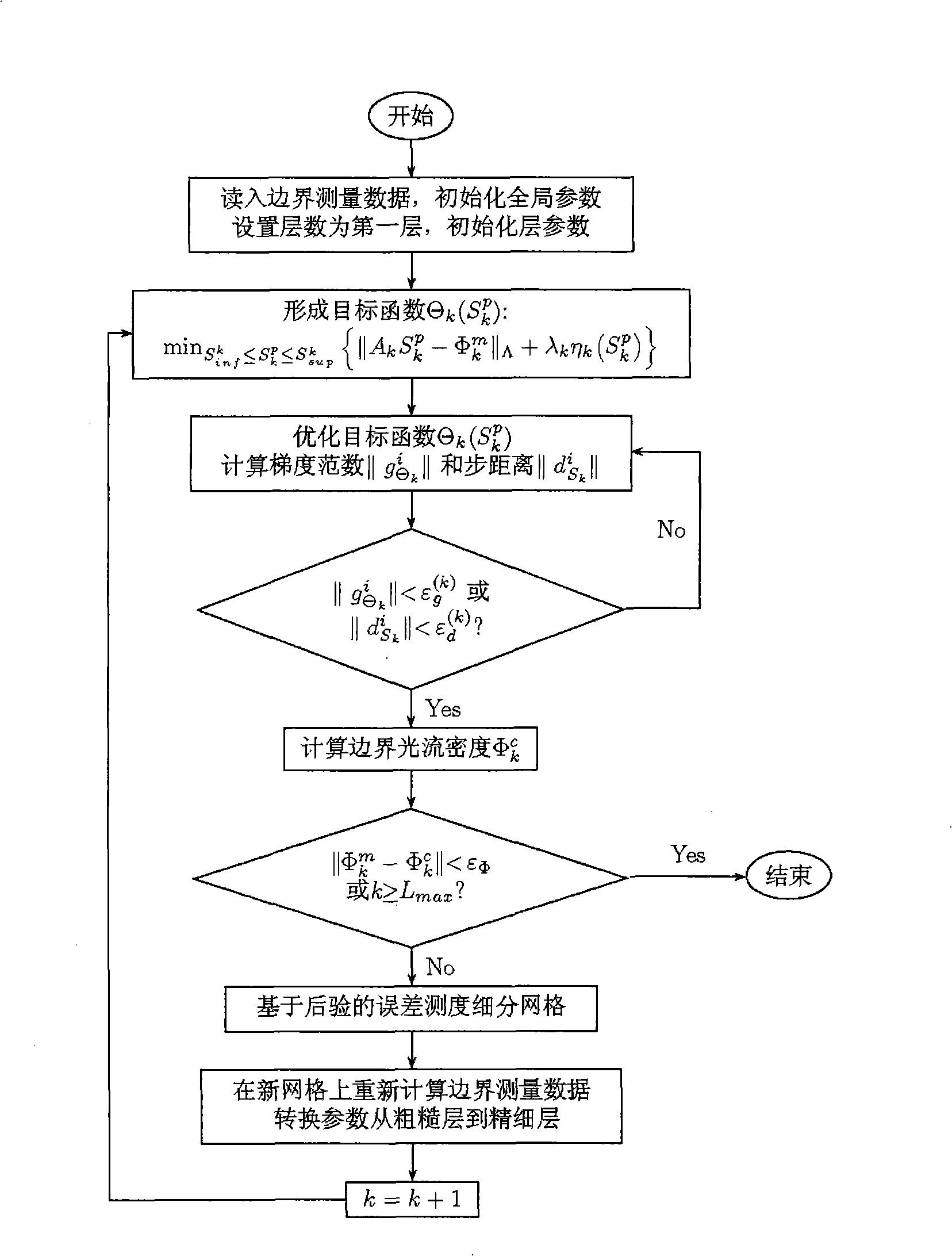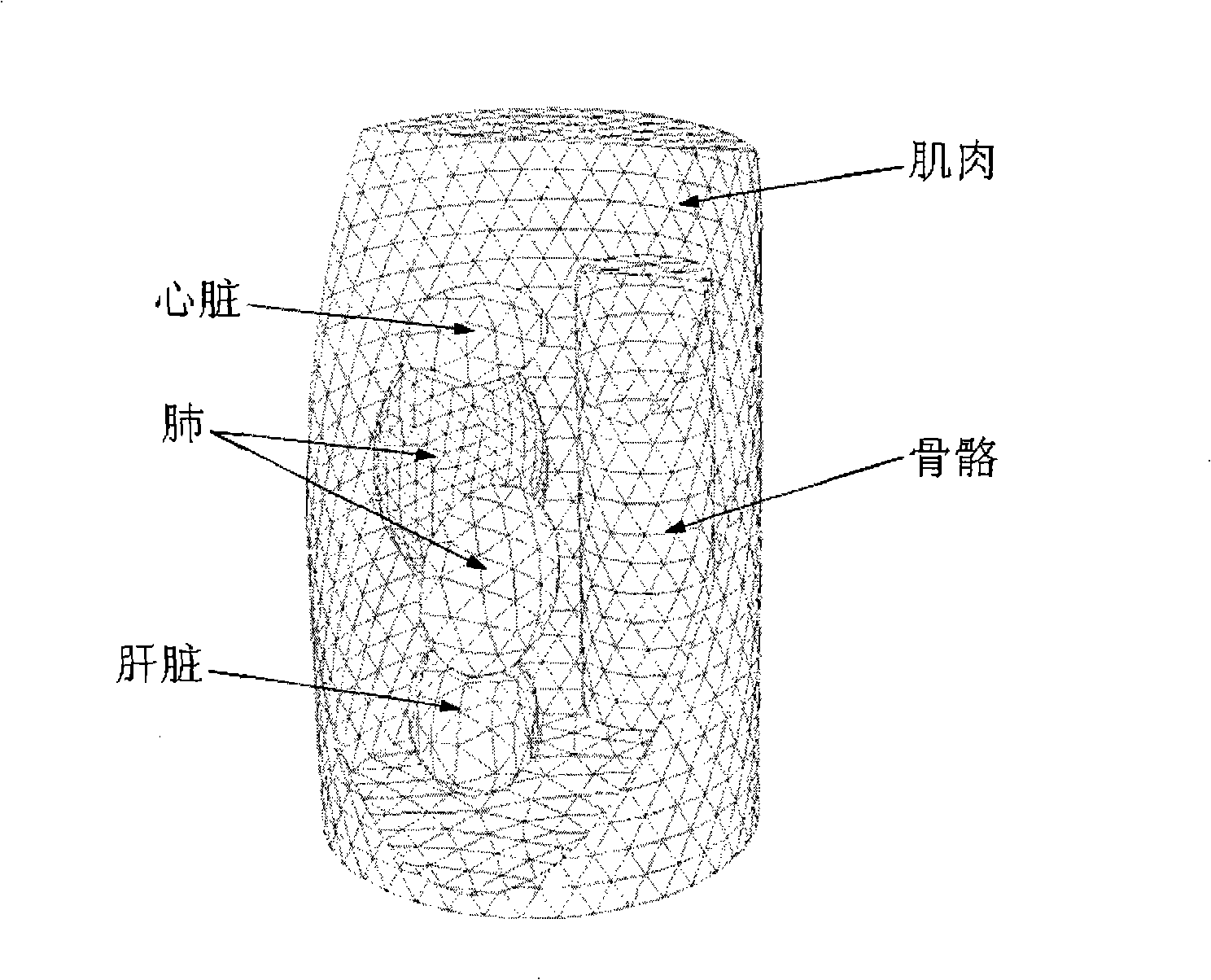Self-adaption finite element light source reconstruction method based on simple spectrum or mix segment measurement
A finite element, self-adaptive technology, applied in diagnostic recording/measurement, application, medical science, etc., can solve problems such as aggravating autofluorescence tomography morbidity, increasing numerical instability and computational cost, etc., and achieves balanced mesh division degree and algorithm efficiency, solving ill-conditioned problems, improving efficiency and robustness
- Summary
- Abstract
- Description
- Claims
- Application Information
AI Technical Summary
Problems solved by technology
Method used
Image
Examples
Embodiment Construction
[0027] The present invention will be described in detail below in conjunction with the accompanying drawings. It should be noted that the described embodiments are only intended to facilitate the understanding of the present invention, rather than limiting it in any way.
[0028] Specific embodiments of the present invention such as figure 1 The experimental flowchart for autofluorescence tomography is shown as follows:
[0029] 1. Using the light source characteristic parameters and anatomical structure information of the reconstructed target area, the reconstructed target area is divided into a priori feasible light source area and a priori forbidden light source area.
[0030] 2. At the boundary of the reconstructed target area, use a high-sensitivity optical detection instrument (such as a liquid nitrogen-cooled CCD detector) to perform single-spectrum or mixed-spectrum detection of the escaped photons to obtain the boundary escape luminous flux Q(r).
[0031] 3. Using th...
PUM
 Login to View More
Login to View More Abstract
Description
Claims
Application Information
 Login to View More
Login to View More - R&D
- Intellectual Property
- Life Sciences
- Materials
- Tech Scout
- Unparalleled Data Quality
- Higher Quality Content
- 60% Fewer Hallucinations
Browse by: Latest US Patents, China's latest patents, Technical Efficacy Thesaurus, Application Domain, Technology Topic, Popular Technical Reports.
© 2025 PatSnap. All rights reserved.Legal|Privacy policy|Modern Slavery Act Transparency Statement|Sitemap|About US| Contact US: help@patsnap.com



